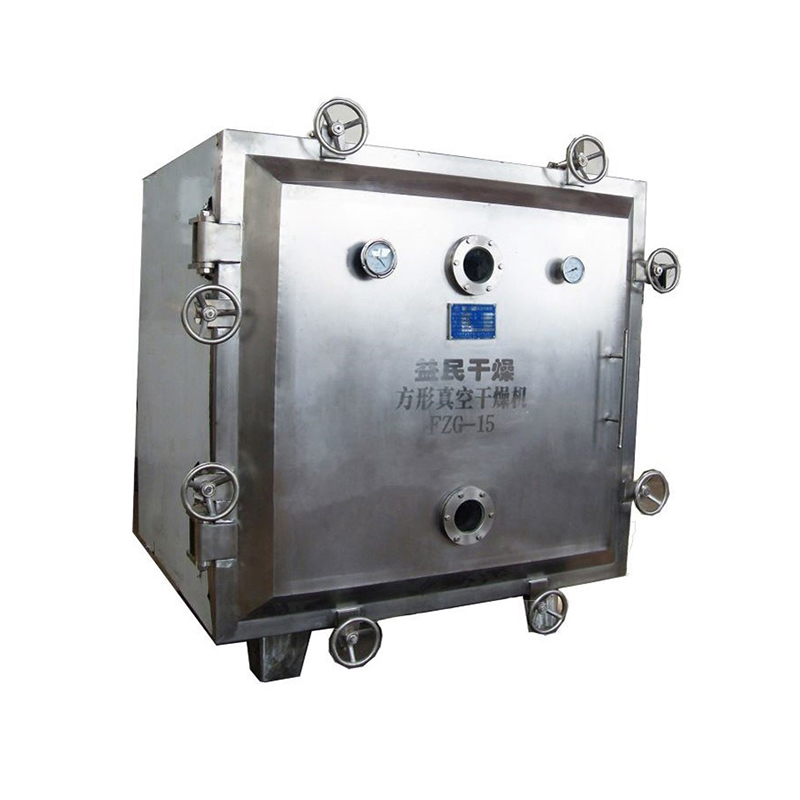Vacuum Dryers: The Science and Applications of Gentle, Efficient Drying
Vacuum dryers are an essential piece of equipment in industries where precise moisture control is critical. These machines operate by reducing the pressure within a sealed chamber, allowing water or other solvents to evaporate at lower temperatures than they would under normal atmospheric conditions. This unique process makes vacuum dryers particularly valuable for heat-sensitive materials that might degrade or lose quality if exposed to high temperatures during drying.
The principle behind vacuum drying is rooted in physics. When pressure decreases, so does the boiling point of liquids. For example, water boils at 100°C (212°F) at sea level but can evaporate at much lower temperatures when subjected to a vacuum. By leveraging this phenomenon, vacuum dryers effectively remove moisture without applying excessive heat, preserving the integrity of delicate substances such as pharmaceuticals, food products, chemicals, and advanced materials like polymers and composites.
One of the standout advantages of vacuum dryers is their ability to handle materials prone to oxidation or contamination. In traditional drying methods, exposure to air can lead to unwanted reactions, such as the formation of rust on metal parts or the degradation of organic compounds. Vacuum dryers eliminate this risk by creating an oxygen-free environment, ensuring that the material remains uncontaminated throughout the drying process. This feature has made them indispensable in industries requiring stringent quality control measures.
Another benefit of vacuum dryers lies in their energy efficiency. Since they operate at reduced temperatures, less energy is required to heat the material being dried. Additionally, many modern vacuum dryers incorporate features such as heat recovery systems and optimized insulation, further enhancing their sustainability credentials. For businesses looking to minimize operational costs while adhering to environmental regulations, these attributes make vacuum dryers an attractive choice.

The versatility of vacuum dryers is another reason for their widespread adoption across various sectors. They come in different configurations—ranging from batch-type units to continuous systems—to suit specific production needs. Batch vacuum dryers are ideal for small-scale operations or when handling multiple product types, as they allow for greater flexibility and customization. On the other hand, continuous vacuum dryers are better suited for large-scale manufacturing processes where consistent output is crucial.
In the pharmaceutical industry, vacuum dryers play a pivotal role in producing active ingredients and formulations with exact specifications. Many drugs are highly sensitive to temperature and humidity, making conventional drying techniques unsuitable. Vacuum dryers ensure uniform drying while maintaining the potency and stability of these compounds. Similarly, in the food processing sector, vacuum drying helps retain the nutritional value, flavor, and texture of perishable items like fruits, vegetables, and dairy products.
Despite their numerous benefits, vacuum dryers do have some limitations. The initial investment cost can be relatively high compared to traditional drying equipment, which may deter smaller businesses. Additionally, maintenance requirements must be carefully managed, as vacuum pumps and seals need regular attention to prevent leaks and ensure optimal performance. However, these challenges are often outweighed by the long-term savings and enhanced product quality achieved through vacuum drying.
As technology continues to evolve, so too does the design and functionality of vacuum dryers. Innovations such as automated controls, real-time monitoring, and integration with Industry 4.0 platforms are transforming how these machines are used. Manufacturers now have access to data-driven insights that enable predictive maintenance, improved efficiency, and streamlined workflows. These advancements not only enhance the reliability of vacuum dryers but also position them as key players in the future of smart manufacturing.



 English
English русский
русский عربى
عربى Türk
Türk




